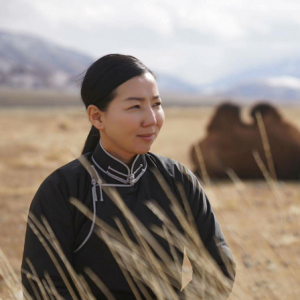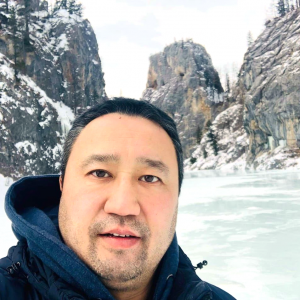Энэ 7 хоногт
Our Lesser-Known Allies in Afghanistan
What do the Greek, Mongolian, Latvian and British Armies have in common? They’ve all been in Afghanistan before: the Greeks under Alexander the Mongols under Genghis Khan
What do the Greek, Mongolian, Latvian and British Armies have in common? They’ve all been in Afghanistan before: the Greeks under Alexander; the Mongols under Genghis Khan; the Latvians as part of the Soviet Union; and the British more than a few times. They are also current members of the International Security Assistance Force, and contribute troops to the coalition mission in Afghanistan.
One need only look to the flag poles at Camp Eggers in Kabul to see a record of the contributing nations (47 to be exact).
Not every nation’s forces are substantial in number — in some cases they are no more than a handful — and of course very few are engaged in outright combat operations. Most are assigned to training, mentoring or other critical support operations.
The Georgian troops, for example, have been used to protect entry points into forward operating bases around Kabul. Their country’s dedication is such that they were kept here even after Georgia’s conflict with Russia back in 2008.
At Camp Alamo, just a short drive away from Camp Blackhorse, there are Greeks, Turks and Mongolians, in addition to the French, British and Australians.
The Mongolians, for certain, provide the most extraordinary example of international support. That Mongolia — a landlocked country of just three million people, nearly half of whom still lead a nomadic life — provides any aid at all to the international force is remarkable.
While there are only a few dozen Mongolian soldiers in the country helping to train the Afghan National Army, the country’s contribution is relatively substantial considering that its military only numbers around 7,000 (less than a single American division).
The Mongolian mission at Camp Alamo, which just moved to another location around Kabul, is to train the Afghans in the operation of indirect fire systems. Since the Mongolians use former Soviet weaponry, particularly mortar and artillery systems, they can train the Afghans in those systems with a familiarity that NATO members could not.
And although Mongolia’s military may not be as fearsome as it once was under Genghis Khan, having been the only country to quell Afghanistan has to count for something.
The Mongolians’ presence around camp also provides a novel experience for the many members of ISAF who are unfamiliar with their distinct culture. While some of the Mongolians struggle with English, their friendliness and dedication does not get lost in translation. Also their presence provides an excellent excuse for the DFAC (dining facility, that is) to have Mongolian BBQ night.
Having spent all my time in Afghanistan training the Afghan National Army, I’ve had plenty of opportunity to work with troops from numerous nations. At Camp Blackhorse we’ve seen Germans, Canadians, French, Croatians, Spanish, Italians, Romanians, Australians and Portuguese pass through to
help train the Afghans. While this can provide linguistic challenges, their differing backgrounds and perspectives offer fresh approaches to working with the national army.
Whereas we Americans tend to be very straightforward and results oriented, Arab allies like Jordan and the United Arab Emirates who are more process oriented provide a good example of relating to the Afghans through relationship building.
One need only look to the flag poles at Camp Eggers in Kabul to see a record of the contributing nations (47 to be exact).
Not every nation’s forces are substantial in number — in some cases they are no more than a handful — and of course very few are engaged in outright combat operations. Most are assigned to training, mentoring or other critical support operations.
The Georgian troops, for example, have been used to protect entry points into forward operating bases around Kabul. Their country’s dedication is such that they were kept here even after Georgia’s conflict with Russia back in 2008.
At Camp Alamo, just a short drive away from Camp Blackhorse, there are Greeks, Turks and Mongolians, in addition to the French, British and Australians.
The Mongolians, for certain, provide the most extraordinary example of international support. That Mongolia — a landlocked country of just three million people, nearly half of whom still lead a nomadic life — provides any aid at all to the international force is remarkable.
While there are only a few dozen Mongolian soldiers in the country helping to train the Afghan National Army, the country’s contribution is relatively substantial considering that its military only numbers around 7,000 (less than a single American division).
The Mongolian mission at Camp Alamo, which just moved to another location around Kabul, is to train the Afghans in the operation of indirect fire systems. Since the Mongolians use former Soviet weaponry, particularly mortar and artillery systems, they can train the Afghans in those systems with a familiarity that NATO members could not.
And although Mongolia’s military may not be as fearsome as it once was under Genghis Khan, having been the only country to quell Afghanistan has to count for something.
The Mongolians’ presence around camp also provides a novel experience for the many members of ISAF who are unfamiliar with their distinct culture. While some of the Mongolians struggle with English, their friendliness and dedication does not get lost in translation. Also their presence provides an excellent excuse for the DFAC (dining facility, that is) to have Mongolian BBQ night.
Having spent all my time in Afghanistan training the Afghan National Army, I’ve had plenty of opportunity to work with troops from numerous nations. At Camp Blackhorse we’ve seen Germans, Canadians, French, Croatians, Spanish, Italians, Romanians, Australians and Portuguese pass through to
help train the Afghans. While this can provide linguistic challenges, their differing backgrounds and perspectives offer fresh approaches to working with the national army.
Whereas we Americans tend to be very straightforward and results oriented, Arab allies like Jordan and the United Arab Emirates who are more process oriented provide a good example of relating to the Afghans through relationship building.







Е